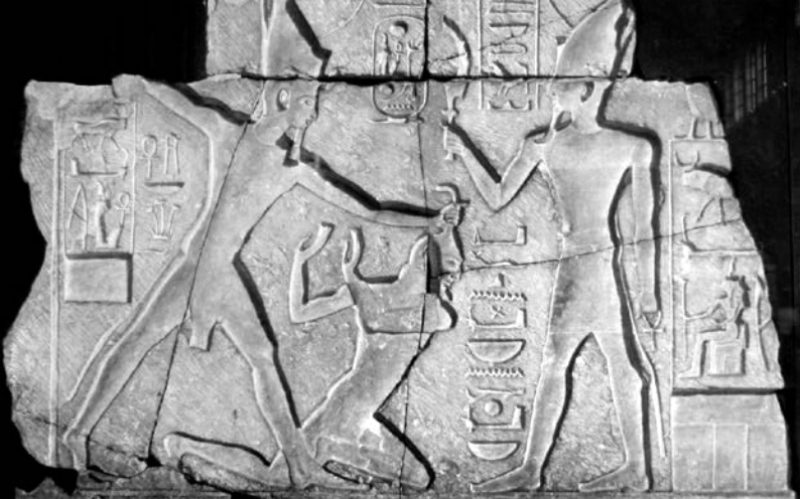On our most recent pilgrimage, we visited the site of Old Testament Jericho (called Tel es-Sultan in Arabic). As its name implies, it is a mound consisting of layer upon layer of human occupation across millennia. (For more on tels, see my post here.) In Old Testament times, the very ancient city of Jericho was a military sentinel city from which the Canaanites guarded entrance to the central part of the land. Anyone daring to advance into the land from the east had to deal with Jericho, and its legendary Middle and Late Bronze Age defenses made that extraordinarily difficult.

Jericho was the first city the Israelites had to engage when they crossed the Jordan River and began their campaign to settle in the promised land. As our group of pilgrims stood on the tel, we recalled a scene from the Book of Joshua that occurred immediately before the Israelite advance on Jericho. In fact, it’s the last thing we read before God gives Joshua his unorthodox instructions for taking the city:
Now when Joshua was near Jericho, he looked up and saw a man standing in front of him with a drawn sword in his hand. Joshua went up to him and asked, “Are you for us or for our enemies?” “Neither,” he replied, “but as commander of the army of the LORD I have now come.” Then Joshua fell facedown to the ground in reverence, and asked him, “What message does my Lord have for his servant?” The commander of the LORD’s army replied, “Take off your sandals, for the place where you are standing is holy.” And Joshua did so.
Joshua 5:13-15, NIV
Why is the “man” standing in front of Joshua holding a sword in his hand, and why does Joshua not respond in kind? It’s because the sword is not being wielded aggressively as if to attack. The man holds out the sword as an offer for Joshua to take it from him. This is a scene familiar to ancient Near Eastern people in which a god offered a king (or a general) the divine sword with which to fight. The presentation of the god’s sword communicated divine support for battle and ensured victory because of that support. With the god behind him and with the god’s own sword in his hand, victory was certain for that king.
This imagery was common at the time of the Israelites, especially in Egypt from whose culture Israel had recently emerged in the exodus. Of course, Yahweh the God of Israel cannot be “pictured” so his “commander” presents the sword on his behalf to Joshua, the leader of Israel (a general for sure, though purposefully leading without the title of “king”). The images below are examples of this iconography in which a god offers the pharaoh a sword for the smiting of his enemies.
The brief conversation that Joshua has with the commander makes it clear that the battles to come are not a matter of God taking Joshua’s “side” but Joshua taking God’s side. As Joshua carries out God’s plan, fighting with the weaponry God provides, victory is assured. This scene in Joshua 5 sets an important theological context for what comes next. Knowing the implied cultural referent of the divine presentation of the sword of victory helps us to understand this enigmatic exchange.



Header photo: Tamar Hayardeni (Tamarah), CC BY 3.0, via Wikimedia Commons
Merneptah Stele: Alyssa Bivins, CC BY-SA 4.0 , via Wikimedia Commons


